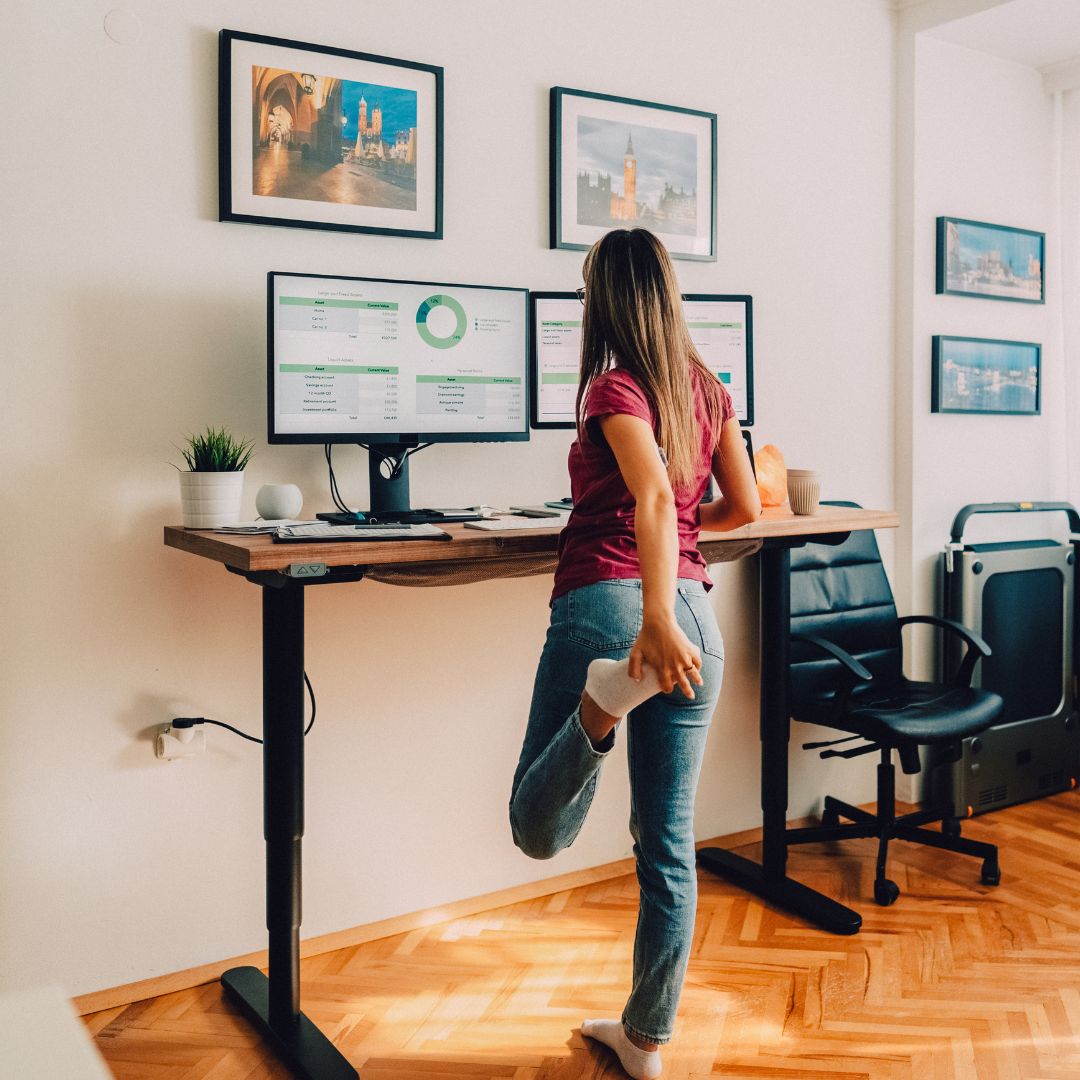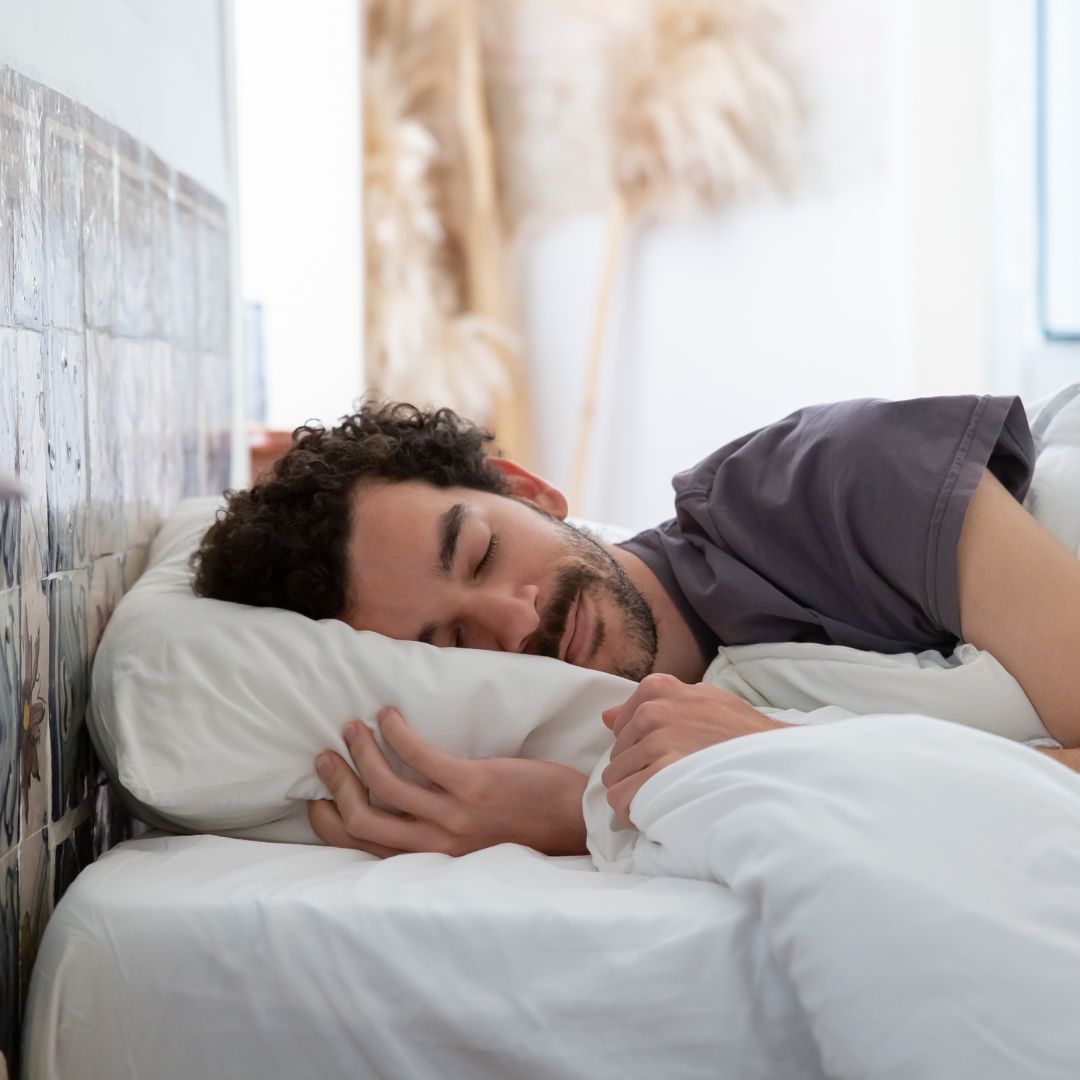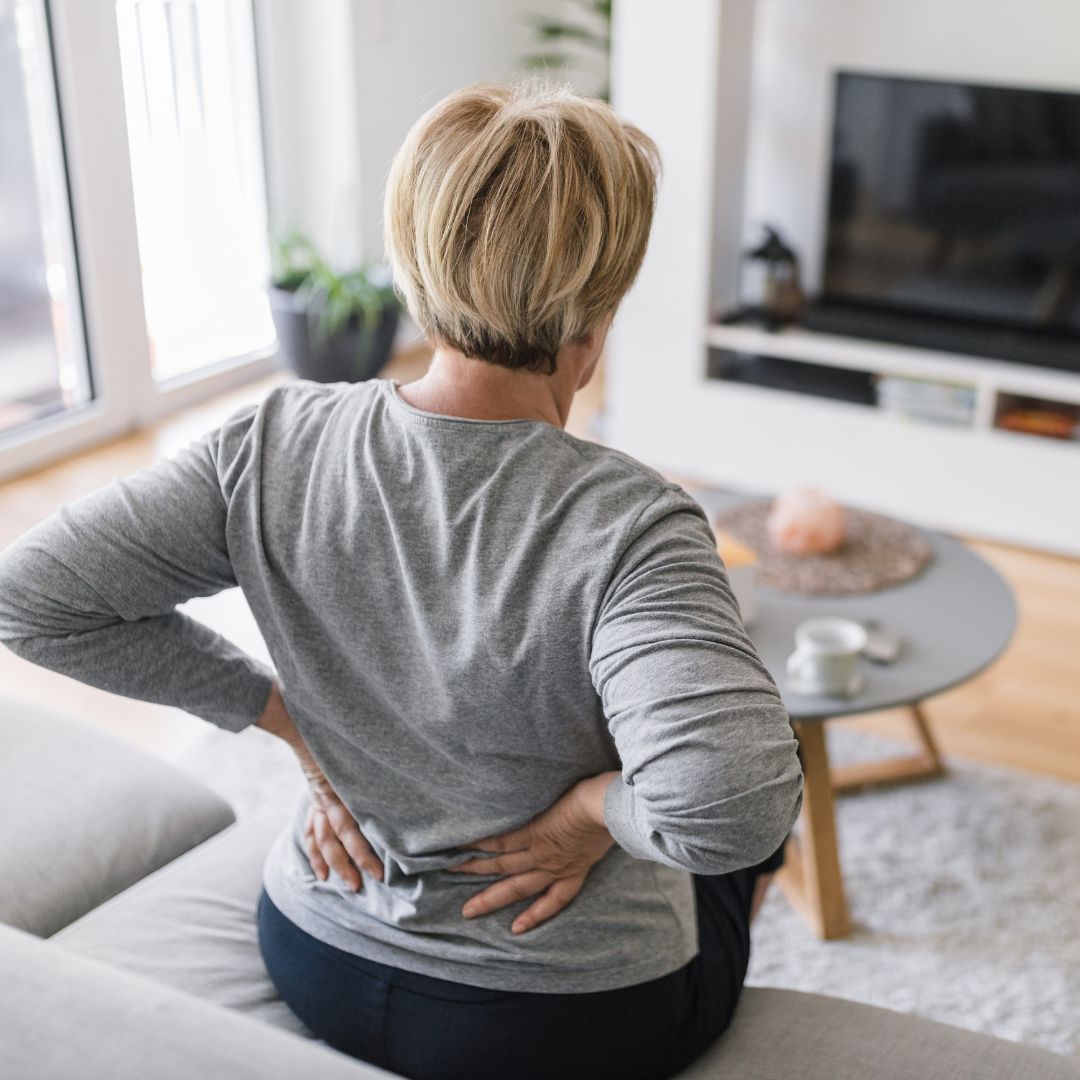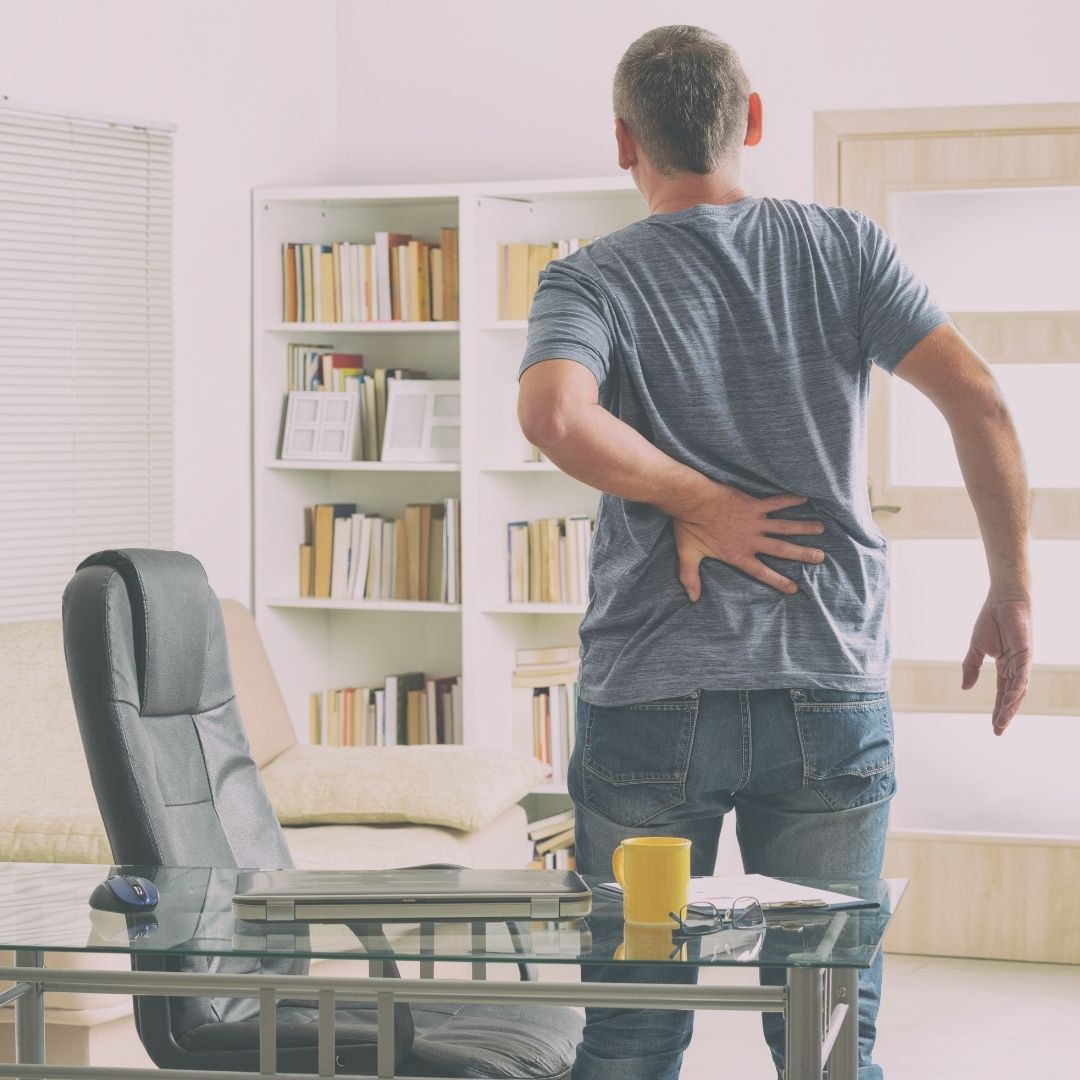Optimize Your Office: 5 Tips for a Healthier Lower Back and Enhanced Productivity
Whether you’re on your feet a lot or sitting, lower back pain can be a real challenge while working in an office.
Learn moreOptimizing Sleep Positions for Lower Back Pain Relief
Are you experiencing lower back pain while sleeping? Sleep is an important component to your overall health, and if back pain is the culprit, it can make for a challenge to catch some z’s.
Learn moreManaging the Connection: Stress and Its Impact on Lower Back Pain
It’s no secret that high levels of stress can affect the body beyond the brain. And if not managed, it can contribute to physical issues, including lower back pain. So much so that the more a person deals with stress, their back pain can become exacerbated.
Learn moreThe Surprising Connection Between Diet, Chronic Inflammation and Lower Back Pain
By Dr. Peter Klapper Ph.D. Did you know that by making a few tweaks to your diet you can alleviate lower back pain? When a person experiences chronic inflammation, it can contribute to various health issues, including back pain. Sometimes, the solution is all a result of what you are putting into your body.Can Certain Foods Cause Inflammation?Yes! Foods that are over-processed, fried, and quick and ready to eat out of the box are packed with added sugar. Those foods may include fast food, processed meat such as hot dogs, ham, bacon, candy, sweetened snacks such as cereal, red meat, alcohol, battered, deep-fried foods, and soda.Sure, all things can be fine in moderation, but if you tend to overeat ultra-processed foods and have back pain, it may be your diet.Anti-Inflammatory FoodsBy incorporating more anti-inflammatory foods into your diet, you may start to notice a change in the amount of pain you feel in your lower back. Those foods include:Fatty Fish: Certain fish are rich in omega-3 fatty acids, which have anti-inflammatory properties. Try adding in salmon, mackerel, sardines and trout as a substitute to red meat.Berries: Various berries such as blueberries, strawberries, and raspberries are packed with antioxidants that can help reduce inflammation.Leafy Greens: By adding in spinach, kale, and Swiss chard into your diet, you will reap the benefits of vitamins and minerals that have anti-inflammatory effects.Nuts and Seeds: Various nuts contain healthy fats and antioxidants that can combat inflammation and alleviate lower back pain. Those include almonds, walnuts, flaxseeds and chia seeds.Turmeric: Turmeric is widely known to have anti-inflammatory properties because it contains a spice called curcumin. When cooking, consider adding turmeric to your dishes or take a supplement. Whole Grains: When you can, incorporate whole grains into your diet such as brown rice, quinoa and whole wheat over refined grains. Whole grains contain fiber and nutrients that can help reduce inflammation.Dairy Alternatives: Some may experience more inflammation from dairy products. Great substitutes can include almond milk, coconut milk or any lactose-free products.Healthy Fats: Avoid trans fats by substituting with healthier fats. Those may include products such as olive oil, avocado and nuts. All in which have anti-inflammatory properties that will help reduce back pain.
Learn moreUnderstanding the Different Types of Pregnancy-Induced Back Pain
Having trouble with lower back pain during pregnancy? Read on to learn more about the different types and how they can be managed through natural remedies.
Learn moreErgonomics; Creating a Back-Friendly Workspace to Combat Lower Back Pain
Are you struggling with lower back pain? Discover how ergonomics can help! Learn the simple steps in creating a back-friendly workspace that will give you long lasting relief.
Learn moreUnderstanding Lower Back Pain; How to Prevent and Relieve Pain
By Dr. Peter Klapper Ph.D. As we age, it’s normal to experience the aches and pain that come with growing older, especially in your lower back. However, you may wonder at what point is the pain you’re experiencing minor or a larger problem that needs to be addressed.Lower back pain is a common condition that affects 619 million people worldwide. It can come on as a dull, constant ache to a sudden sharp pain that makes day-to-day tasks a challenge. There are various reasons it can occur. Some may experience lower back pain when coughing or after performing a deadlift. All of that said, it comes as no surprise that with so many suffering from lower back pain, it is a major public health issue.So, is this just a condition that comes with age or injury? First, it is important to understand the underlying causes of lower back pain and then the various ways that people find relief.Understanding Lower Back PainThose that experience lower back pain, may have similar symptoms to others with the same ailment, yet a different root cause. Various factors and lower back pain causes may include: Poor Posture: Those who are sitting or standing with incorrect posture for prolonged periods of time can strain the lower back muscles and lead to pain over time. Muscle Imbalances: Weak or tight muscles, especially in the core and pelvic area, can disrupt the natural balance of the spine leading to pain. Especially if it’s from repeated heavy lifting or an awkward movement that leads to a strain. Lifestyle Factors: Sedentary lifestyles, lack of exercise, smoking and obesity can contribute to lower back pain. Ruptured Discs: When the soft inner core of a disc in the spine pushes through the outer layer, it can irritate nearby nerves and cause pain. Arthritis: Degenerative conditions like osteoarthritis can lead to the breakdown of the spine's joints and discs, resulting in pain in the lower back. Injuries: Accidents, falls, or lifting heavy objects improperly can strain or injure the lower back. Risk Factors For Lower Back PainWhile the factors above can cause back pain, there are also risk factors that can make it more likely for a person to experience chronic lower back pain. Those factors include:Age: Yes, it’s not in your head that you’re older and you have more aches and pains. Back pain becomes more common as you get older due to the wear and tear that is put on the spine and can start as early as 30.Lack of Exercise: If you aren’t exercising your muscles in your back and abdomen, you they will become weak which can lead to back pain.Obesity: If you have excess body weight, it can put more stress on your back.Smoking: Smoking reduces blood flow, and if your spine isn’t getting enough blood flow, it can decrease your body’s ability to heal. Not to mention it also can increase your risk of osteoporosis. Coughing from smoking can also be a contributor to back pain and lead to herniated discs.Improper Lifting: A lot of back injuries are due to poor form when lifting. If a person uses their back instead of their legs when lifting something heavy, it can strain the muscles and lead to severe back pain.Sports: Depending on the sport, high-impact activities can lead to back injuries without the proper conditioning.Medical Conditions: Various medical conditions such as arthritis, osteoporosis and spinal stenosis can increase risk of back pain. And in rare cases, back pain can be caused by infections or tumors in the spine.Unsupportive Furniture: Do you have lower back pain after sleeping on your mattress? Sleeping on an unsupportive mattress or sitting on furniture that doesn't provide adequate back support can contribute to back pain.Mental Health: Those who are prone to anxiety or depression appear to have a greater risk of back pain. When you’re stressed, you tend to tighten your muscles which can lead to increased back discomfort.Natural Ways to Find Relief from Lower Back Now that we have identified what causes back pain, how do you treat it? While there are medications and lower back pain relief products available, both prescription strength and over the counter drugs are not advisable to take long-term due to effects and dependence. And other medical options such as surgery may not be a fit for everyone. But don’t give up hope, there are many natural ways to treat lower back pain.Dietary Changes – A few changes to your diet may be a game changer for your back pain. Some diets are highly inflammatory and include a lot of trans fats, refined sugars and processed foods that could be contributing to back pain. Not to mention, a healthy diet can help an individual maintain a healthy weight, strengthen your bones, and reduce pressure that is put on the spine.Physical Activity: Engaging in regular exercise, such as walking, swimming, or yoga, can strengthen the back muscles, improve flexibility, and alleviate pain.Physical Therapy: Physical therapy for chronic back pain may include retraining your posture, testing the limits of pain tolerance, stretching and flexibility exercises, aerobic exercises, and core strengthening.Mindfulness and Self Care: Chronic back pain can take a toll on a person physically but also emotionally, which is why it’s important to take the time to deal with the psychological aspects of back pain. This may include meditation, massage therapy, tai chi, yoga and other cognitive and relaxation-based therapies and strategies. The goal is to retrain your brain on how you focus on pain.Alternative Treatments: Various treatments such as acupuncture, a traditional Chinese medicine practice that involves inserting thin needles into specifics points of the body, have been known to alleviate back pain. Another option people seek for relief is visiting a chiropractor so that their spine can be adjusted.Exercises: Lower back pain relief exercises such as core strengthening can help prevent and provide long-term relief. A strong core supports the spine and helps distribute the load evenly, and most exercises can be done anywhere. Lower back pain exercises at home that should be part of your routine include planks, bridges and abdominal crunches.Stretching of the hamstrings and hip flexors should also be incorporated into your exercise regimen to help relieve tension on the lower back, especially after prolonged periods of sitting.Make Environmental Changes: Ensure that your workspace and home environment are ergonomically designed to reduce strain on your back. Invest in a supportive chair, adjust your computer screen height, supportive footwear, and use lumbar cushions if necessary.Posture - Day and Night: During the day, be mindful of your posture when you’re sitting and be sure to keep your feet flat on the ground and your knees at hip level. When standing, distribute your weight evenly on both feet and keep your shoulders back.At night, sleep on a mattress that provides proper support for your back and use a pillow that keeps your head and neck in alignment with your spine.Herbal Remedies: Certain herbs and spices can heal your back in a natural way. Herbs such as valerian root, known to help reduce the sensitivity of nerves, and turmeric and ginger, which have natural anti-inflammatory properties, all play a part in alleviating pain in the lower back.Back Pain – Organic Plant Medicine: Our natural back pain relief medicine provides powerful relief from sudden sharp pain or constant aches from lower back, sciatica, neck and shoulder pain. Regardless of the treatment plan you decide is best for you, we always advise that you talk with your doctor to see what option will benefit you long-term.Moving ForwardWe get it, lower back pain can be completely debilitating and change a person’s quality of life. However, it can be managed and prevented through various methods. If you are experiencing back pain, first, try and address the root cause to see if you can make changes immediately to your lifestyle. Then work with your doctor to find the best treatment plan moving forward.Don’t lose hope. You can get your life back with consistency, patience, and dedication to making changes to your lifestyle and finding the path to a life free of the limitations of lower back pain.
Learn moreHow To Know If You Have Sciatica
By Dr. Peter Klapper Ph.D. Have you ever had a pinched nerve? You know, that burning or numbness sensation that can radiate in your extremities. Most times a pinched nerve can resolve itself, but what happens if it doesn’t seem to be going away? Some nerve pain can indicate a greater problem such as a herniated disc, tumor or an overgrowth of bone on your vertebrae. However, more times than not, the nerve that becomes pinched by these issues is the sciatic nerve in turn causing sciatica.What Is Sciatica?Sciatica is nerve pain from an injury or irritation to the sciatic nerve, which originates in your buttock/gluteal area. If you suffer from “sciatica,” you can expect to experience pain through the lower back, hips, buttocks and down your legs.Sometimes this can be a result of an injury, and other times it happens just from living life. Normal aging can put your nerves at risk of being pinched along with health conditions such as diabetes, pregnancy, and osteoarthritis. However, most people tend to get sciatica between the ages of 30 and 50, are overweight and either have an inactive or overactive physical lifestyle.So, what does it feel like?Up to 85% of Americans experience some type of back pain during their lives. Many times, this type of back pain can look like muscle strains in the lower back, so it’s important to understand what sets sciatica apart when trying to diagnose the pain you may be experiencing.With Sciatica, the pain will radiate down the leg and into your foot. Imagine a constant bad leg cramp that isn’t going away. You will feel numbness or weakness in your lower back down to your feet, pain that worsens with movement, “pins and needles” in your legs and feet, and possible loss of bowel and bladder control. The pain most often occurs on one side and can also feel like a dull ache mixed with a burning sensation.How To Ease The PainThere are many forms in which you can treat sciatica. Most times, your doctor will start with less intrusive measures that don’t require surgery. That can look like various exercises and stretches from physical therapy that work on increasing core strength, strengthening the lower back muscles and working other muscles that are inflexible.Other treatments include ice and heat therapy, massage, and chiropractic therapy, over the counter pain relievers, steroids, injections and in worse case scenarios, surgery.Treat Sciatica NaturallyIf you’re looking for a more natural approach to treat your sciatica, try our fast-acting back pain product or our natural nerve pain relief. Our natural back pain relief medicine provides powerful relief from sudden sharp pain or constant aches from lower back pain and sciatica. How does it work? Well, the combination of natural organic plant medicine combined with Arnica for sprains, muscle, and tendon relief and Rue and Horse chestnut, has been historically used to help reduce inflammation naturally to ease back pain.Forces of Nature Back Pain Relief is great for those who are looking for an alternative back pain treatment with no side effects.
Learn moreSix Medication-free Ways to Ease Low Back Pain
By Dr. Peter Klapper Ph.D. 80 percent of us will experience back pain at some point in our lives, and if you have ever had an aching back, you know just how debilitating this can be.You may miss work or social occasions due to back pain, and even if you do manage to show up, the pain can be distracting and may prevent you from giving it your all.Back pain runs the gamut, from a dull, near-constant ache to a sudden, sharp pain. It may come on suddenly and last a few days to a few weeks (acute back pain) or last for more than three months (chronic back pain). There is a laundry list of potential causes of low back pain, including advancing age, underlying disease, overdoing it, lifting a heavy object the wrong way, a big fall, or even a minor slip. There are also many structures in your back that can be affected, including your vertebrae, joints, muscles, tendons, ligaments, and discs.Over-the-counter and prescription medications can reduce back pain, but these do have side effects especially when used for long periods of time. This is why interest in natural back pain treatments is at an all-time high. In one study in Global Advances in Health and Medicine, more than 40 percent of people with low back pain said they used complementary or alternative medicine to treat their pain in the past year, most commonly herbal supplements, chiropractic manipulation, and massage. And 58.1 percent of folks who used complementary or alternative medicine said these methods worked really well.DietResearch presented at the 2021 Association of Academic Physiatrists conference found that eating an anti-inflammatory diet including whole grains and lots of fruits and vegetables will lower your risk for developing low back pain.Homeopathic remedies Our natural Back Pain Treatment contains arnica, which is known to reduce swelling and pain, along with St. John’s Wort and other herbs with anti-inflammatory properties. It’s topical so there’s no risk of systemic side effects or addiction. Just roll the product over problem area and gently rub it into the skin as needed for back pain relief on the spot. Hot or cold packsApplying cold to your back when the pain is acute for the two days after an injury and then switching to heat 48 hours after injury can relax muscles and soothe painful areas, the Arthritis Foundation notes. ExerciseDoctors used to suggest bed rest for back pain, but not anymore. As long as there isn't a serious underlying cause, the party line is to be as active as possible to speed up your recovery. Stretching and flexibility exercises, including Yoga and tai chi, can also help strengthen your back and reduce pain. Weight loss, if you need to, can also help reduce back pain naturally. Hands-on therapiesChiropractic care, physical therapy, occupational therapy, and even massage can also relieve back pain and improve function and range of motion.Stress reliefStress makes everything worse, including back pain. Find something that helps you cope with stress, such as meditation, deep breathing, or even just going for a walk, and do it every single day. Your back will thank you. You could even incorporate our Calm Mood into your every day to help combat stress. If your back pain isn't getting better, see a doctor to find out what's causing it, and if there is anything else you should be doing to get relief.
Learn moreI’m Young, Fit, and Healthy- Why Do I Have Back Pain?
Learn why even the most active people can experience back pain, and get advice on how to identify the source of your discomfort with natural remedies from Forces of Nature Medicine.
Learn moreWhy Back Pain is an Issue for Athletes and Young Adults
Learn why athletes and young adults are particularly at risk for suffering from back pain, including musculoligamentous strains, sciatica pain, herniated discs, and chronic joint pain.
Learn moreHow Do You Treat Back Pain?
Back pain affects an estimated 31 million Americans according the ACA and is one of the single leading causes of physical disability worldwide. Including the lower and upper back, sciatica, neck and shoulders, the pain can travel form your neck to your legs.
Learn more












